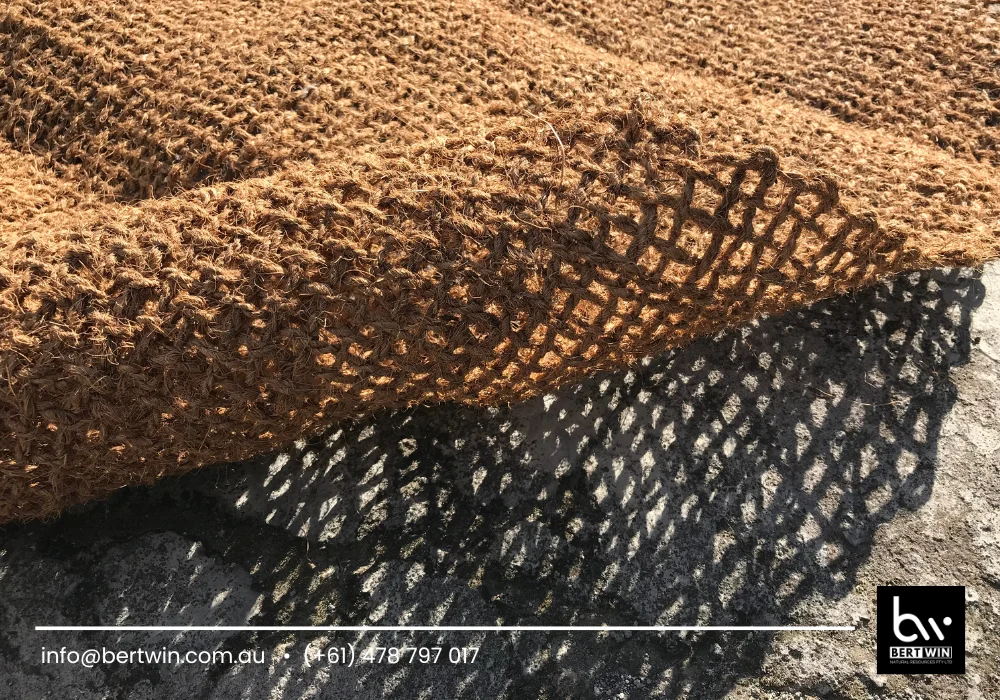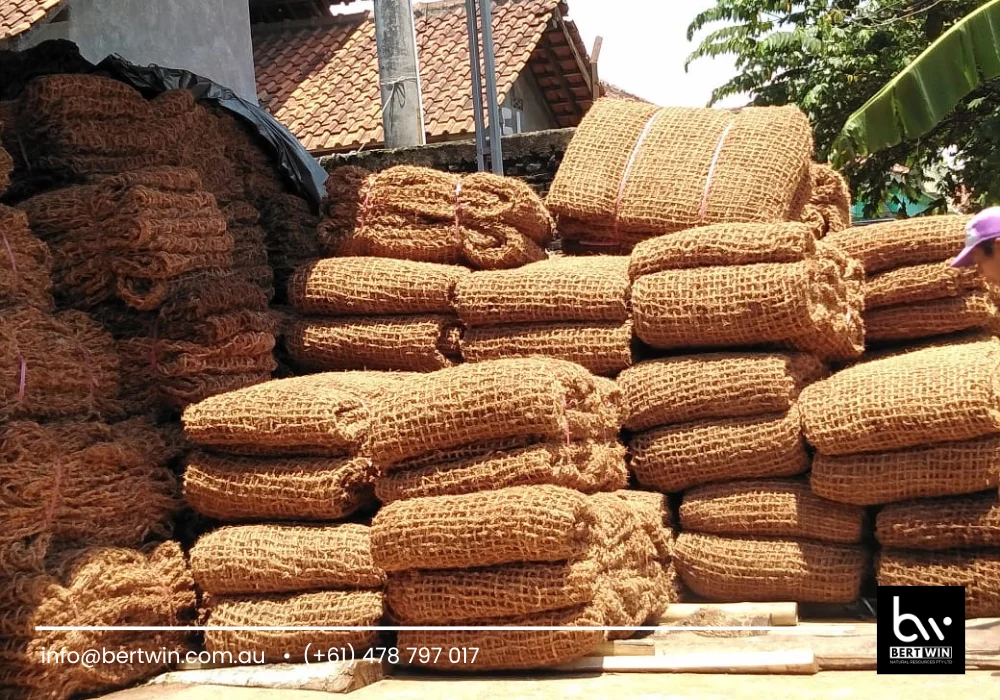Coir mesh uses are widely recognized in environmental engineering, landscaping, and agriculture for their ability to stabilize soil, prevent erosion, and support vegetation growth. Derived from coconut husk fibers, coir mesh is a sustainable and biodegradable solution that offers strong structural integrity while supporting ecological restoration. In this article, we explore the main coir mesh uses, its environmental benefits, and how it compares to synthetic alternatives.

Coir mesh is especially valued in areas with vulnerable slopes, riverbanks, and construction zones where the land needs temporary but effective reinforcement.
What is Coir Mesh?
Coir mesh, also known as coir netting or coir erosion control fabric, is made from the outer fibers of coconuts. These fibers are woven into nets or mats with various densities and strengths depending on the application. As a biodegradable geotextile, coir mesh offers structural support while naturally decomposing over time—typically within three to five years—allowing the soil and vegetation beneath it to stabilize.
Because it is made from organic material, coir mesh is safe for wildlife and plants. It does not introduce toxins into the environment, making it an ideal choice for eco-sensitive projects.
How Coir Mesh is Produced
The manufacturing process begins by extracting the long, coarse fibers from mature coconut husks. These fibers are cleaned, spun into yarn, and woven into mesh sheets. The resulting product is durable, breathable, and flexible enough to be installed on a wide range of terrains.
Key Coir Mesh Uses
The versatility and environmental compatibility of coir mesh make it useful in a variety of situations. Let’s look at some of the most common coir mesh uses in today’s landscape and civil engineering projects.
1. Erosion Control on Slopes and Embankments
Among the most critical coir mesh uses is erosion control. When applied to slopes, hillsides, or newly graded embankments, coir mesh protects soil from being washed away by rainfall or irrigation. It holds the topsoil in place, giving grass and groundcover plants time to establish strong root systems that will offer long-term stability.
2. Riverbank and Shoreline Protection
Coir mesh is commonly used to protect riverbanks, lake edges, and coastal areas from erosion caused by flowing water or wave action. The mesh conforms to uneven terrain and can be easily planted with aquatic vegetation. As the plants grow, they anchor the bank more firmly, and the coir mesh eventually decomposes without harming the ecosystem.
3. Roadside and Construction Site Stabilization
During infrastructure development, newly exposed soil is at high risk of erosion. Coir mesh can be installed on construction slopes and road embankments to protect the soil during and after the building process. It is often combined with hydroseeding or seeded manually to ensure rapid vegetation cover.
4. Agriculture and Agroforestry Applications
In farming and plantation setups, coir mesh is used on terraced fields or uneven land to prevent soil erosion and retain moisture. It is especially useful in tropical and subtropical regions where heavy rainfalls can degrade topsoil.
5. Landscaping and Gardening Projects
In urban gardens, parks, and green roofs, coir mesh helps shape terrain, prevent runoff, and support aesthetic landscaping. It can be integrated with ornamental plantings or grass to create visually pleasing, eco-friendly green spaces.
Advantages of Using Coir Mesh

There are several reasons why coir mesh uses continue to expand in environmental and engineering fields:
- Biodegradable: Decomposes naturally without leaving pollutants.
- Environmentally Safe: Non-toxic to flora and fauna.
- High Tensile Strength: Can withstand strong rainfall and wind.
- Supports Plant Growth: Promotes root development under the mesh.
- Cost-Effective: Requires minimal maintenance after installation.
Because coir mesh eventually breaks down into organic matter, it improves the soil structure and fertility over time.
Installation Tips and Best Practices
To maximize the benefits of coir mesh, it should be laid on well-prepared soil. The surface should be cleared of large rocks and debris. The mesh is then unrolled and secured with biodegradable stakes or wooden pegs. Overlaps between rolls should be at least 10 cm to prevent gaps.
For better results, seeds or seedlings can be placed underneath or directly through the mesh openings. Regular watering and monitoring in the first few weeks ensure that vegetation establishes well and that the mesh remains intact.
Conclusion
With growing environmental concerns and the need for sustainable solutions, coir mesh uses have become essential in both small- and large-scale land restoration projects. Whether it’s stabilizing a slope, protecting a riverbank, or enhancing the beauty of a landscaped garden, coir mesh offers a natural, effective, and environmentally conscious alternative to synthetic erosion control materials.
For further information, you may contact WhatsApp at (+61) 478797017 or via email at info@bertwin.com.au.
